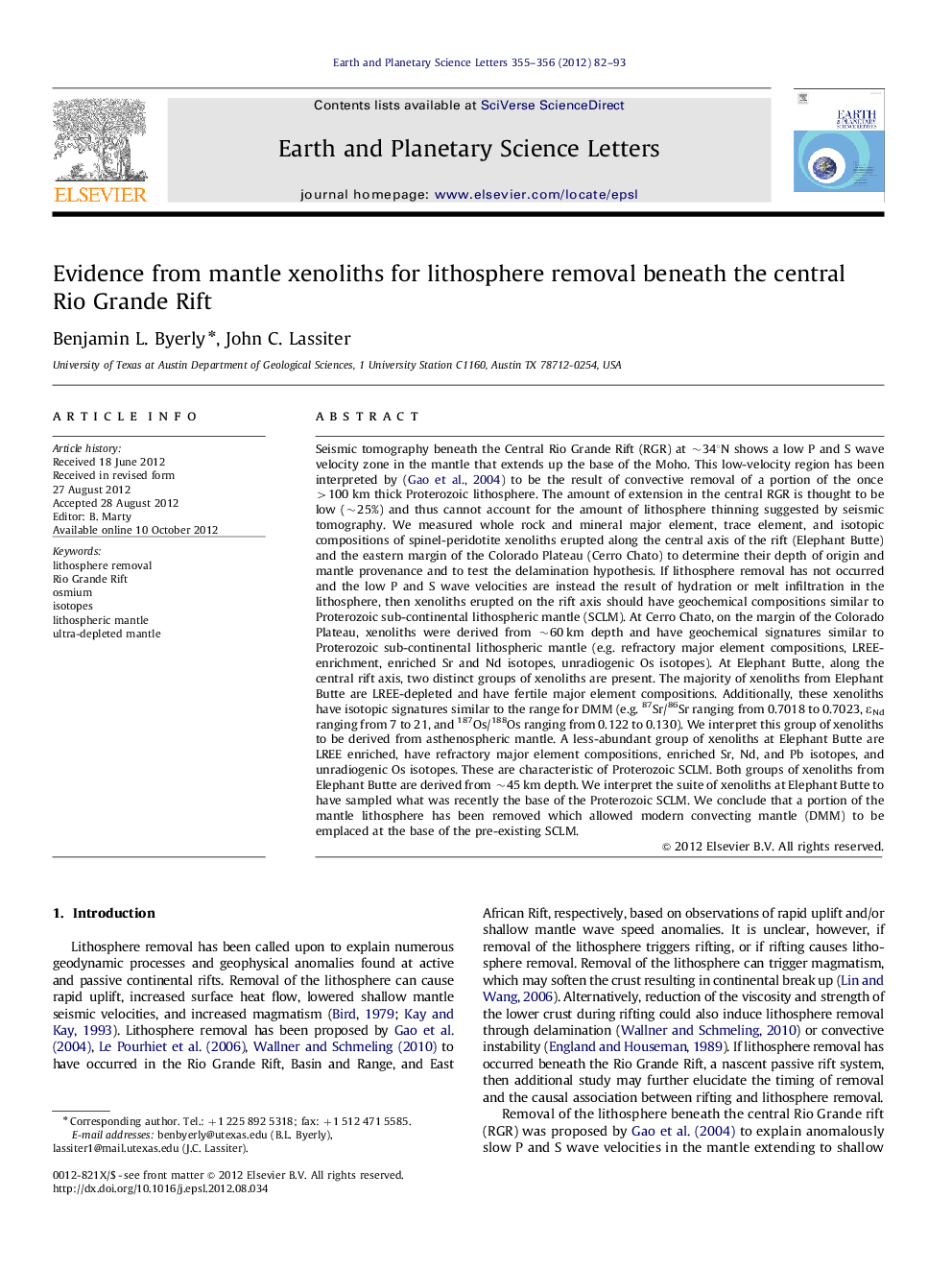| کد مقاله | کد نشریه | سال انتشار | مقاله انگلیسی | نسخه تمام متن |
|---|---|---|---|---|
| 4677360 | 1634795 | 2012 | 12 صفحه PDF | دانلود رایگان |

Seismic tomography beneath the Central Rio Grande Rift (RGR) at ∼34°N shows a low P and S wave velocity zone in the mantle that extends up the base of the Moho. This low-velocity region has been interpreted by (Gao et al., 2004) to be the result of convective removal of a portion of the once >100 km thick Proterozoic lithosphere. The amount of extension in the central RGR is thought to be low (∼25%) and thus cannot account for the amount of lithosphere thinning suggested by seismic tomography. We measured whole rock and mineral major element, trace element, and isotopic compositions of spinel-peridotite xenoliths erupted along the central axis of the rift (Elephant Butte) and the eastern margin of the Colorado Plateau (Cerro Chato) to determine their depth of origin and mantle provenance and to test the delamination hypothesis. If lithosphere removal has not occurred and the low P and S wave velocities are instead the result of hydration or melt infiltration in the lithosphere, then xenoliths erupted on the rift axis should have geochemical compositions similar to Proterozoic sub-continental lithospheric mantle (SCLM). At Cerro Chato, on the margin of the Colorado Plateau, xenoliths were derived from ∼60 km depth and have geochemical signatures similar to Proterozoic sub-continental lithospheric mantle (e.g. refractory major element compositions, LREE-enrichment, enriched Sr and Nd isotopes, unradiogenic Os isotopes). At Elephant Butte, along the central rift axis, two distinct groups of xenoliths are present. The majority of xenoliths from Elephant Butte are LREE-depleted and have fertile major element compositions. Additionally, these xenoliths have isotopic signatures similar to the range for DMM (e.g. 87Sr/86Sr ranging from 0.7018 to 0.7023, εNd ranging from 7 to 21, and 187Os/188Os ranging from 0.122 to 0.130). We interpret this group of xenoliths to be derived from asthenospheric mantle. A less-abundant group of xenoliths at Elephant Butte are LREE enriched, have refractory major element compositions, enriched Sr, Nd, and Pb isotopes, and unradiogenic Os isotopes. These are characteristic of Proterozoic SCLM. Both groups of xenoliths from Elephant Butte are derived from ∼45 km depth. We interpret the suite of xenoliths at Elephant Butte to have sampled what was recently the base of the Proterozoic SCLM. We conclude that a portion of the mantle lithosphere has been removed which allowed modern convecting mantle (DMM) to be emplaced at the base of the pre-existing SCLM.
► We examined spinel peridotite xenoliths from the central Rio Grande Rift.
► Xenoliths represent both lithospheric and asthenospheric mantle.
► Xenoliths sample lithosphere–asthenosphere boundary at ∼45 km depth.
► Convective removal of lithosphere is necessary to thin lithosphere to these depths.
Journal: Earth and Planetary Science Letters - Volumes 355–356, 15 November 2012, Pages 82–93